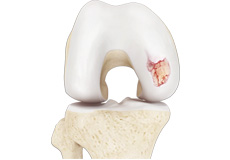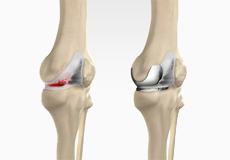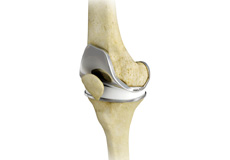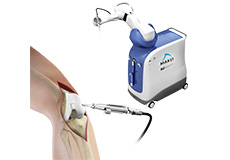Knee Conditions
Manchester Hip and Knee Clinic provide their patients with the highest quality of care, incorporating non-surgical and surgical techniques, methods and a philosophy of treatment of musculoskeletal problems derived from Fellowship-training and experience garnered from the USA, Canada and Europe. Winston Kim is specialist Hip & Knee Surgeon, dedicated exclusively to Hip and Knee Surgery, performing over 170 hip & knee replacements and over 250 hip & knee arthroscopic procedures a year, including Hip Labral repairs and ACL reconstructions.

Knee Arthritis
Over the last few months have you noticed increasing discomfort, aching and stiffness in your knees? Perhaps you have noticed a “grating” feeling or that your knee has odd lumps and bumps on it which never used to be there. You may have pain aggravated by turning or twisting movements.

PARTIAL ROBOTIC ASSISTED KNEE REPLACEMENT
I have received enquires from patients regarding ‘Personalised Knee Replacements’. Personalised knee replacements refer to total knee replacements which are performed utilising MRI technology to produce personalised positioning guides to be used during the knee replacement.

Knee Replacement Surgery
A knee replacement, or arthroplasty is a surgical procedure in which the arthritic portions of the knee are removed and replaced with a new, artificial joint. The operation involves removing the damaged surfaces of the knee and replacing them with an artificial joint containing metal and plastic component. It is an extremely successful operation for the vast majority of people.

Robotic Assisted Knee & Hip Replacement
Knee and hip replacements are common, successful surgical procedures where the worn out, damaged surface of the knee or hip surface is removed and replaced with an artificial joint. Approximately 160,000 hip and knee replacements are performed in England and Wales each year.
